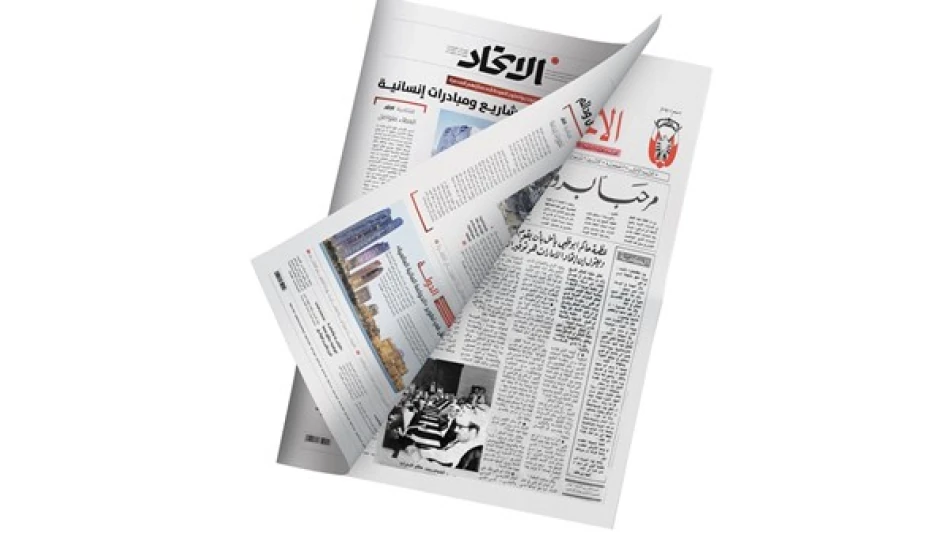
The Union: 56 Years of Responsibility and Ambition - A Commemorative Look at the UAE's Remarkable Journey
Al Ittihad newspaper celebrates its 56th anniversary today, marking more than half a century of documenting the UAE's remarkable journey from vision to global powerhouse. The newspaper launched on October 20, 1969, just two years before the UAE's formation, carrying the same name as the union that founding father Sheikh Zayed bin Sultan Al Nahyan dreamed of creating.
From Weekly Paper to Digital Pioneer
The story began modestly. Abu Dhabi's government launched Al Ittihad as a 12-page weekly publication with 5,500 copies distributed for free. The goal was simple but ambitious - compete with established newspapers from other Arab countries while supporting Sheikh Zayed's vision of uniting the seven emirates.
When the UAE officially formed in 1971, Al Ittihad shifted gears. The paper started publishing daily editions and introduced color pages. But here's where it gets interesting - in 1981, Al Ittihad became the first newspaper in the Arab world to use satellite technology for content transmission. They set up a second printing facility in Dubai so the paper could be printed simultaneously in both Abu Dhabi and Dubai, solving distribution delays across the country's growing cities.
The digital transformation came early too. Al Ittihad launched its website on March 15, 1996, making it one of the first local newspapers to go online. By 1978, it was already the first Gulf newspaper to receive photos via radio transmission.
Adapting to Social Media and Modern Audiences
The newspaper didn't just follow digital trends - it anticipated them. In 2020, Al Ittihad launched a comprehensive digital project with updated websites, smartphone apps, and specialized platforms covering economics, sports, entertainment, and opinion pieces. Today, it operates 24 digital platforms.
The numbers tell the story. Al Ittihad's TikTok account has become the fastest-growing news platform in the UAE in terms of followers during 2024 and 2025. This matters because it shows how traditional media can successfully reach younger audiences without losing credibility.
More Than News - Building National Dialogue
Since 2006, Al Ittihad has hosted an annual forum that brings together leading thinkers, researchers, and academics. These aren't just ceremonial events - they tackle real issues that matter locally, regionally, and globally.
Over 19 editions, the forum has covered everything from Iran's nuclear program and Arab culture in the globalization era to the Arab Spring, terrorism, the Houthi conflict, and climate action during COP28. The most recent forums have focused on artificial intelligence and the UAE's growing role in space exploration.
This approach reflects something important about the UAE's media landscape. Instead of just reporting events, Al Ittihad has positioned itself as a platform for serious policy discussions that shape public opinion and government thinking.
Documenting a Nation's Rise
Al Ittihad has had front-row seats to the UAE's transformation. The newspaper covered the Hope Probe mission to Mars, Emirati astronauts working on the International Space Station, hosting Expo 2020 Dubai, and the country's leadership in renewable energy and sustainability initiatives.
But it's also attracted heavyweight intellectual contributors. The paper has featured prominent Arab philosophers and thinkers, including Hassan Hanafi, Tayyeb Tizini, and Mohammed Abed al-Jabri. It has partnered with international newspapers to enhance content quality, particularly in economics, advanced sciences, and political analysis.
For investors and policymakers watching the Middle East, Al Ittihad serves as a reliable indicator of UAE government thinking and priorities. The newspaper's editorial stance has consistently supported the country's moderate, business-friendly approach while promoting tolerance and international cooperation.
As traditional newspapers worldwide struggle with declining readership and revenue, Al Ittihad's success in digital transformation offers a blueprint for media companies in emerging markets. The key seems to be embracing new technology while maintaining editorial credibility and staying closely connected to national development goals.
Most Viewed News

 Layla Al Mansoori
Layla Al Mansoori






